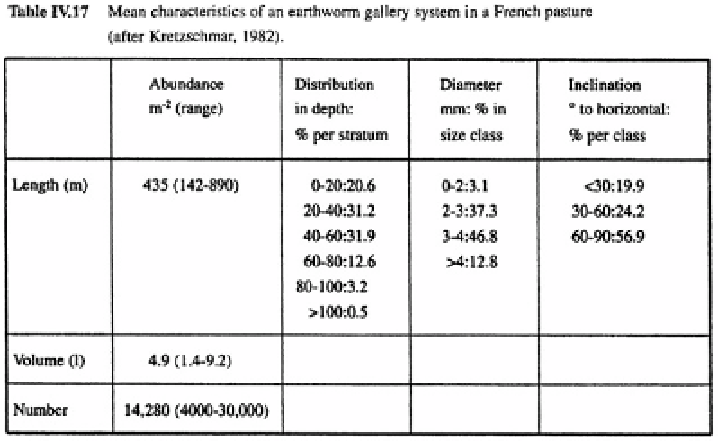Agriculture Reference
In-Depth Information
at 22.5 cm
.
This implies that burrows may exist for a few months close to the soil
surface but for several years deeper in the soil.
Micromorphology of burrows
Galleries are cylindrical and their walls are regularly recoated with cutaneous mucus
each time the worm passes through. Sometimes, worms deposit casts on the walls of
their galleries; this seems to occur more frequently in deep soil strata rather than close
to the surface. As a result, there is a continuity between the soil porosity and earthworm
galleries in the upper centimetres of soil and a discontinuity in the deeper soil. Such
specific features as iron-stained linings are not uncommon; they evidence the important
physico-chemical changes which can influence soils close to earthworm galleries
(Jeanson, 1979; Kretzschmar, 1987; Lamparsky
et al.,
1987).
4.2.4
ASSOCIATED MICROFLORA AND FAUNA
The soil microflora is remarkably concentrated at the surface of gallery walls and within
the adjacent 2 mm of the surrounding soil. This micro-environment comprises less than
3 % of the total soil volume but contains 5 to 25 % of the whole soil microflora with
a predominance of certain functional groups. Typical figures are 13 % of anaerobic
N-fixers, 16-40 % of denitrifiers, over 40 % of proteolytic and aerobic N-fixers and more
than 60 % of hemicellulolytic and pectinolytic bacteria. However, the microbial
communities of galleries and the surrounding drilosphere vary markedly with depth
and between seasons (Bhatnagar, 1975; Rouelle, 1977). In a microcosm experiment with


